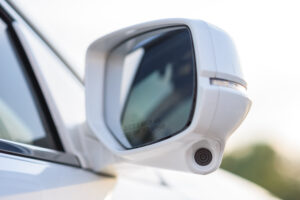
Association says its group aims to improve vehicle camera safety standards
By onAssociations | Technology
A draft safety standard, including methods and key performance indicators (KPIs), from the IEEE Standards Association (IEEE SA) could help the collision repair industry further ensure proper recalibration of advanced driver assistance system (ADAS) cameras.
The global engineering, computing, and tech information organization says that as ADAS applications become more prevalent in the overall automotive industry, “there is a crucial need to create standards for image quality in the hopes of improving safety for all drivers.”
Collision repairers have long been taught to follow OEM procedures for safe and proper repairs along with a more recent emphasis on correct ADAS recalibration to factory standards. Robert Stead, a member of IEEE’s Working Group for the Automotive System Image Quality Draft Standard (IEEE-SA P2020), told Repairer Driven News that goes hand-in-hand with the goal of P2020.
“IEEE would not be directly involved in any repairing or replacing, and the P2020 standards are not intended to be used directly as any kind of process or procedure for repairing or recalibrating,” he said. “However, what the P2020 standards are intended to do, is to be a resource that can be used by the industry when they are doing their own camera design, testing and assessment, which may include post-accident recalibration. What’s certainly true is that poorly repaired vehicles without proper calibration would result in poorly operating safety systems. The methods and KPIs described in the standard document could be used to help ensure repairs have been done to the required standards.”
The draft standard currently under development will define a standardized suite of objective test methods for measuring automotive camera image quality attributes, according to IEEE. It will also specify tools and test methods to facilitate standards-based communication and comparison among OEMs, Tier 1 suppliers, and component vendors regarding automotive ADAS image quality.
Formed in 2016 to address the gap in automotive imaging standards, the IEEE P2020 Working Group received input from more than 300 auto industry experts who shared feedback and helped to identify gaps in existing standards.
“New cars have dozens of cameras, integrated into many safety systems, often serving to replace our eyes, but the industry lacks a consistent way to measure image quality,” said Margaret Belska, P2020 Working Group chair. “The standard when approved by the IEEE Standards Board will help to create a set of KPIs that can be used to evaluate camera systems and components in automotive applications.”
Current standards for automotive applications are incomplete and consistency challenged because of the uncontrolled environment cars traverse through as well as the complex hardware and combination of human and machine viewing they use, IEEE said.
IEEE believes P2020 addresses those complexities and includes preliminary proposals for flare, geometric calibration validation, noise, dynamic range, spatial frequency response (SFR) and flicker.
Approval is anticipated to be granted by the IEEE SA Standards Board next year. The Working Group’s goal for this year is to receive input from the industry, including OEMs, Tier 1 suppliers, and technology experts. IEEE says that feedback is “absolutely paramount to improving the standard.”
“OEMs, Tier 1 suppliers and technology experts all have important roles to play in creating open standards that meet the needs of the automotive industry as a whole in the area of safety-critical ADAS applications,” said Balaji Holur, NVIDIA Corp. senior director of image systems and software. “Safety is our top priority, and we support open dialogue among industry leaders to help bring IEEE’s P2020 automotive system image-quality standard to fruition.”
As many in the industry may be aware, the Collision Industry Electronic Commerce Association (CIECA) provides workflow standards specific to the collision industry and SAE International provides a wide variety of mobility standards including ADAS and autonomous technologies.
When RDN asked how IEEE’s standards work compares to that of CIECA and SAE, Stead said CIECA’s standards are post-incident period whereas P2020’s focus is on incident prevention technologies. SAE has standards committees related to ADAS and autonomous vehicle development but not any tied directly to camera image quality, he said.
The International Organization for Standardization (ISO) also has standards for the automotive industry including ISO26262. It provides guidelines for the development and validation of vehicle electrical and electronic system functional safety. And new security standards set by ISO, such as ISO21434, are used to extend the safety and security of new high-tech vehicles.
“So that’s where the IEEE-SA P2020 standard is filing a gap in the industry, not currently fulfilled by SAE, ISO, or any other standards body,” Stead said. “It’s important to P2020 that we are not trying to ‘reinvent the wheel’ where there are other relevant standards that can be incorporated.
“Indeed, many of the P2020 standards are derived from previous standards either under IEEE or other organizations, or previously published scientific papers on image quality KPIs and measurement. What P2020 is doing, however, is considering these existing ways of measuring image quality and applying them to automotive use cases, as the use case is critical to understanding of the correct measurement of image quality.”
A sample of the draft standard can be viewed and the full document purchased at the IEEE SA Standards Store. Feedback, ideas or comments on the standard can be sent to std-P2020@ieee.org for consideration by the Working Group.
Images
Featured image credit: Serhii Sobolevskyi/iStock
